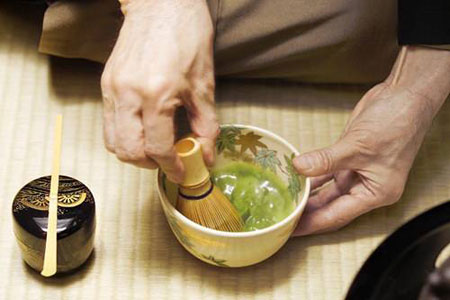origin: Guangming Author: Xie Tianyuan: "how the tea ceremony was introduced into Japan in the Southern Song Dynasty"
recently, the National Museum of Tokyo, Japan, " The soup of tea, the essence of Japanese tea ceremony culture, tells the historical origin of tea road crossing Japan with a large number of exquisite ancient relics.
China is a country rich in famous tea. Tea culture has a long history, but when it comes to the two words of "tea ceremony", it will feel that it is Japanese culture. In fact, the tea ceremony in Japan is originated from China.

in the Song Dynasty, China has a complete and unique tea ceremony culture, but with the change of the dynasty, the tea ceremony is declining in China. In the late Southern Song Dynasty, after the tea ceremony was spread to Japan, it was preserved in a foreign country.
>
in the late Southern Song Dynasty, the tea ceremony entered the Japanese
tea ceremony with Zen, actually originated in China. However, the earliest time for Chinese people to start drinking tea is not available. The ancient saying that Yan Emperor Shennong discovered tea between the grass and trees, so the "grass man wood" as the shape, this is of course legend. In a word, the custom of drinking tea was very popular in the Western Han Dynasty, and the Tang Dynasty became a popular social etiquette in the society. The Tang people's "Feng Shi Lu" has a record of "tea Daxing, Wang Gong dowel no non drinker". It is precisely because of this cultural background that Lu Yu can write a Book of "tea classics" and record the perfect and standardized. Tea ceremony in the Tang Dynasty. Japan sent the Tang Dynasty to China, once brought back to the Tang Dynasty tea ceremony, but because of the late Tang and war, the Tang Dynasty was interrupted, so Japan did not have time to introduce tea, tea was drunk, and the tea ceremony was broken.
the modern tea ceremony in Japan, following its ancestral origins, actually came from the Song Dynasty. Drinking tea in the Song Dynasty is very particular. It has a detailed specification on the environment, etiquette, and mode of operation of tea drinking. It is also divided into various kinds, such as the palace tea banquet, the temple tea banquet, the literati tea banquet and other elegant gatherings, which are the common interests of the national upper class intellectuals. The popular tea ceremony in the Song Dynasty was tea ordering, that is, making tea. Today's popular tea cake, ice cream, and so on, though it is from Japan, is actually the return of civilization in Song Dynasty to China. The so-called "Mocha", which is similar to coffee, is washed and drunk, that is, after the tea cake is ground into powder, it is washed with boiling water. Song people are very particular about the method of tea flushing, if the tea flush is not good, tea and water will not be completely integrated, and there will be water in the cup, if the tea flush well, tea blend, silver millet flashing, foam waves surging, beautiful color. In order to appreciate the silver white tea soup, the song people very highly praised the Fujian Jianyang kiln produced by the black tea, known as the building, among them, such as obsidian, oil droplets, rabbit and other names.
in the late Southern Song Dynasty, a large number of Japanese monks studied Zen in the Song Dynasty. They inherited the Chan pulse and took back the tea ceremony and the tea tree together. This is a key cultural transmission, because the tea ceremony is a fine technology that needs Royal support. The tea sets unearthed from the Famen Temple site in the Tang Dynasty are fine gold and silver. The top tea cake of the Song Dynasty is 22 of gold and forty thousand of the most expensive cake. It can be said to be the most precious.